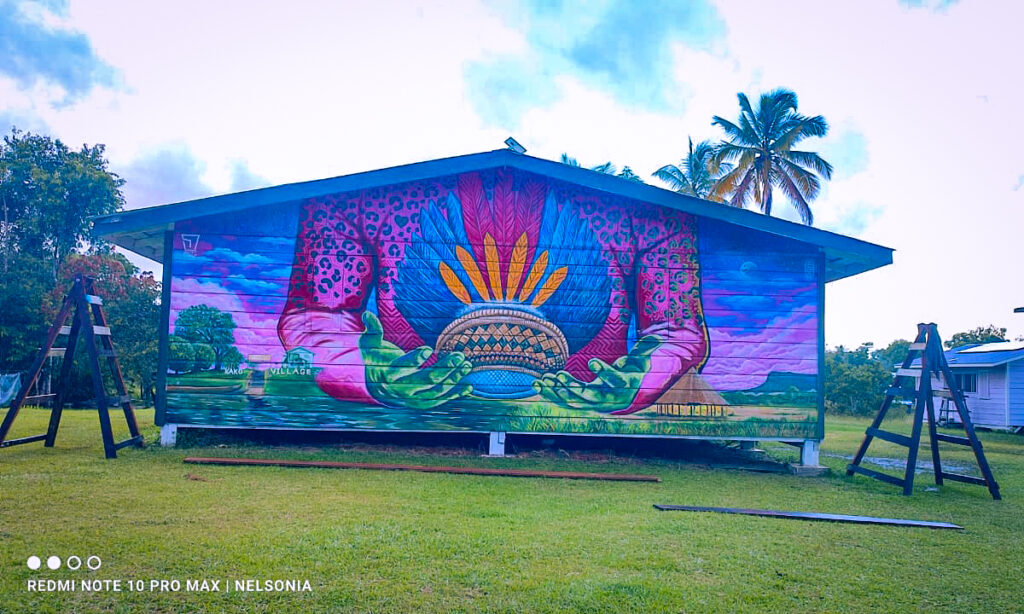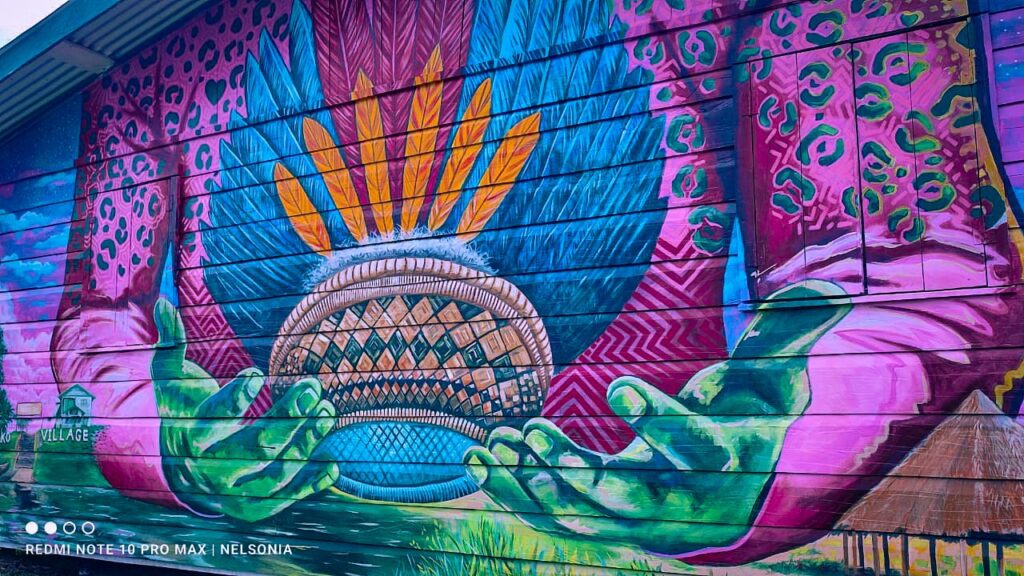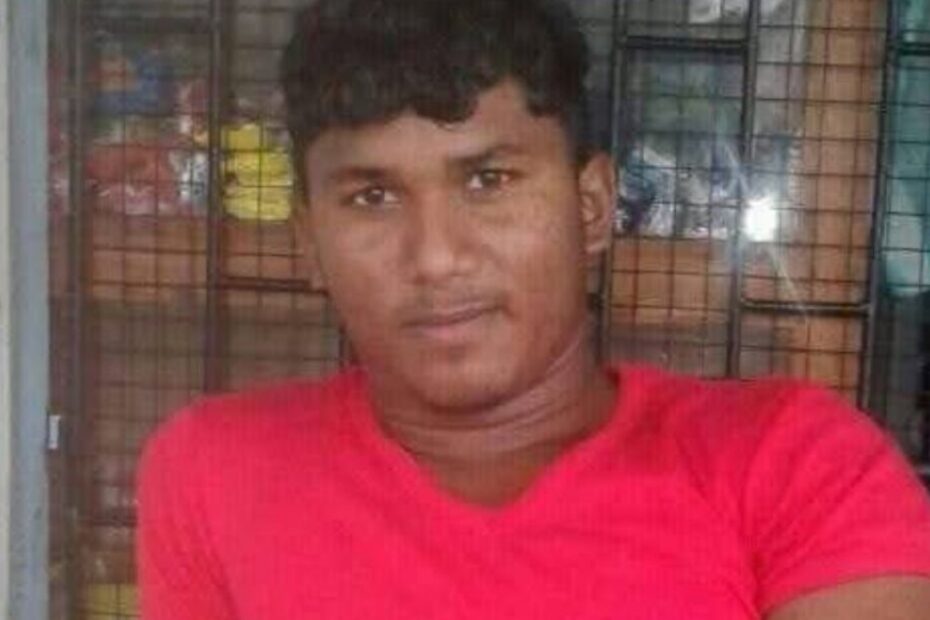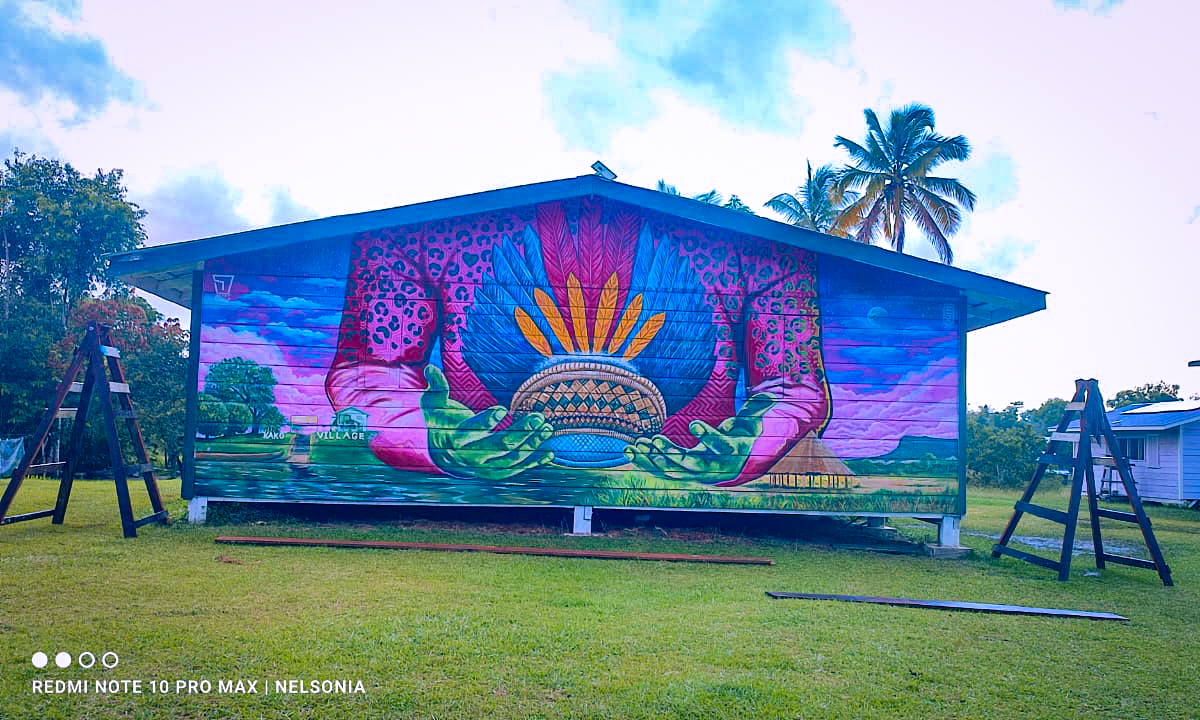Kako Village Council Shared : At the heart of the mural stands a central human figure adorned with a headdress that rests across the chest. Prominently displayed are six golden feathers, each symbolizing the six Village Chiefs of the Upper Mazaruni who, in 1998, brought a landmark case before the High Court of Guyana. This powerful appeal sought recognition for the traditional lands of the Akawaio and Arecuna peoples, represented by:



- Anderson Hastings (Kako)
- Norma Thomas (Kamarang)
- Dutchill Isaacs (Waramadong)
- Van Mendenon (Phillipai)
- Lawrence Anselmo (Paruima)
- Czar Henry (Jawalla)
Additional feathers represent the wider community—villagers and supporters who stood in solidarity with their leaders.
The brown woven section of the headdress symbolizes the land itself, serving as the unifying thread that binds the people and their culture, deeply interwoven with their history, identity, and way of life.
In the lower right corner, the mural features a depiction of Kako’s river landing, while the lower left showcases its savannah and Karawuta mountain—two landscapes that, although rarely seen together, each carry their own distinctive visual and cultural significance. Above these landscapes, clouds and stars evoke the sky and cosmic traditions of the people, symbolizing vastness and historical continuity, and quietly reminding viewers of the meaning behind “Kapong.”
A special thank you goes to Mr. Nigel Butler (NIIX) of the Silent Walls Project for collaborating on this magnificent piece of artwork. The Silent Walls Project is a public art experience that explores social change through community engagement.
Other News :

Missing Person Alert: Chris Jeet
![]()





